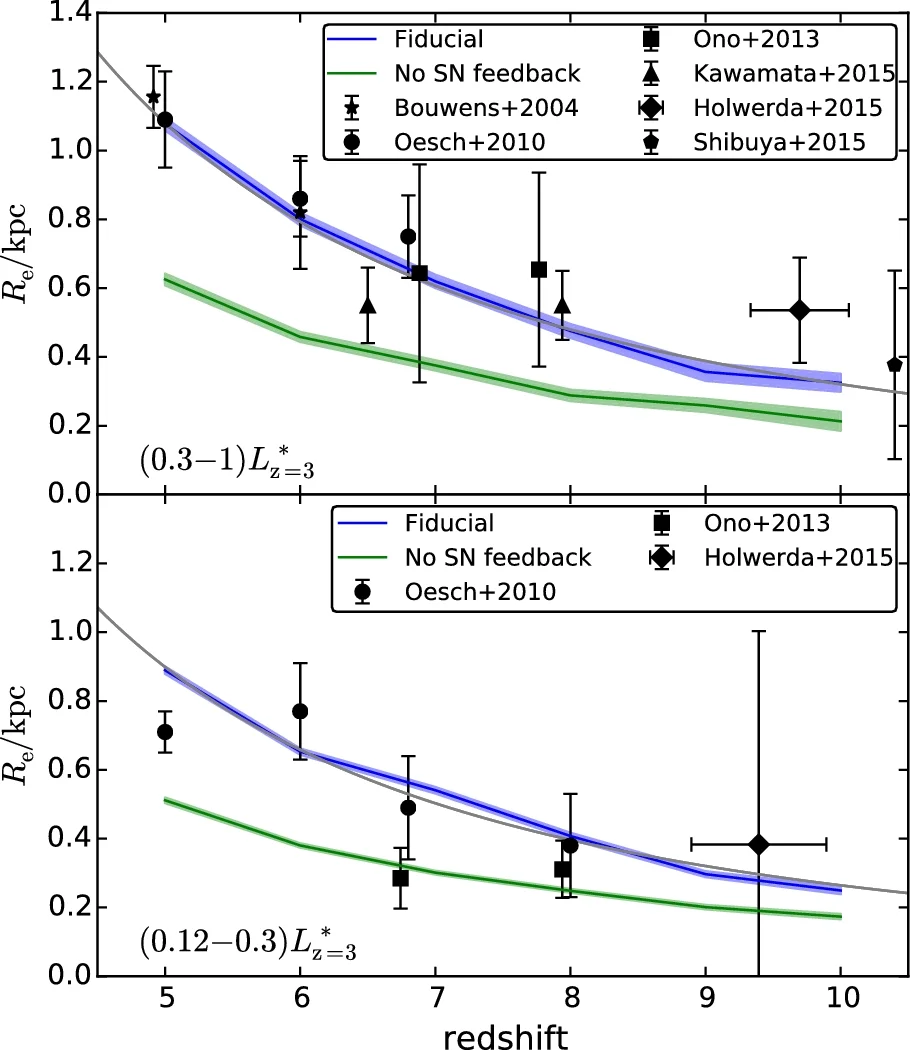"Dark-ages reionization and galaxy-formation simulation VII: The sizes of high-redshift galaxies" - Chuanwu et al. (2017)
Alan Duffy
A lovely prediction paper from Chuanwu Liu of the DRAGONS collaboration showing the expected sizes for the most distant galaxies that current (and future) telescopes are trying to observe. The tentative existing detections appear to be well explained by our model of galaxy formation with the effective radius (i.e. the size of the disk of the galaxy) being larger for brighter objects but only with a power law scaling of 0.25! In other words a galaxy ten thousand times more luminous will be a disk galaxy only ten times wider. Finally, we make clear that the successor to the Hubble Space Telescope (the James Webb Space Telescope) will be unlikely to see these tiny disks and instead we will have to wait for ground based extremely large telescopes like the Giant Magellan Telescope (and critically one in which Australia is heavily invested).
